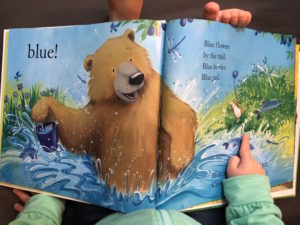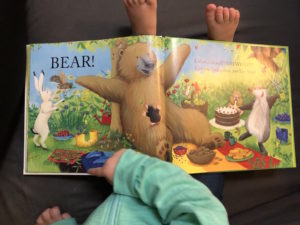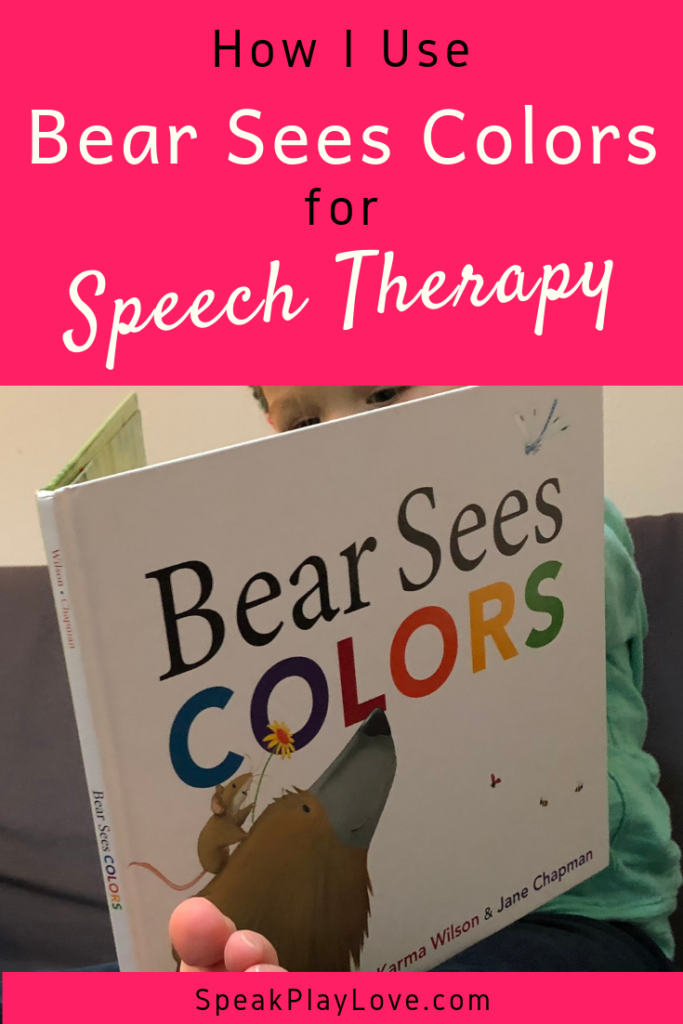
Bear Sees Colors for Speech Therapy
Back when I lived in Boston, one of my favorite teachers that I worked with recommended that I buy any of the Bear books by Karma Wilson from the school’s book fair.
I’m so glad she did because the book Bear Sees Colors has gotten A LOT of use over the past few years during therapy with students in early intervention, preschool, and even with early communicators in elementary school.

Literacy-based lessons are wonderful for so many reasons, but I love Bear Sees Colors by Karma Wilson and Jane Chapman in particular because the color-focused picture scenes can be very interactive. Here’s how I’ve used this book in speech therapy sessions:
Build Vocabulary
This book has a lovely rhyming scheme and flow, so it is just really fun to read aloud! I like to point out the characters because these animals are unique and your student might not have encountered a raven, badger, mole, hare, or gopher yet.
The author also uses unique word choices for common items like galoshes for rain boots, etc. This is great for vocabulary building and talking about synonyms.
After reading a page with new vocabulary, I will often tell students the common name for it as well such as, “Galoshes is another name for rain boots.”
RELATED: Using Visuals to Teach WH Questions (Plus Free Visual Aid!)
Take Turns “Spying” Items on the Color Pages
There are several color-themed illustrations in this book that are really fun for playing “I spy” and for combining two words.
- Receptive Language: I like to see if the student can find the item that “I spy” on the page.
- Expressive Language – single word level: Take “I spy” up a notch by having the student point to what I spy then asking what the student sees, such as “I spy/see a fish; what do you see?”

- Expressive Language – combining two words: This is the perfect book for working on two-word utterances because everything on the color page starts with the same color: blue fish, blue bucket, blue flower, etc.
- Expressive Language – sentence level: I like to use the sentence starter, “I see . . .” or “I spy. . .”I often will say something like, “I see a blue fish. What do you see?” This offers your student a delayed model of a complete sentence structure and allows for turn-taking!
Learn Colors
Based on the title, I’m sure it’s no surprise that colors are a theme here! The way the story is set up really lends itself to labeling the target color as you turn the page and reveal what color “bear sees.”
This book naturally works with the Expectant Pause strategy, which is a great way to encourage children to chime in. Read more about using the Expectant Pause here (the linked article is written for parents, but can be helpful for anyone new to working with emerging talkers – and it includes a free printable handout for parents!)
Most children love repetition, so after you’ve read this book a few times your student will be excited to fill in the end of your sentence!
RELATED: My Favorite Board Games to Use in Speech Therapy
Act Out the Action Words:
Building vocabulary with action words can be extra fun for a “busy” student because you can ask him/her to act out the action – just like the characters in the book!
Depending on your student’s level (and how much space you have) you might tell your student, “Splash like Bear.” This is great for building receptive language skills.
OR you can work on expressive language by asking your student, “What is Bear doing?” See if the student will answer you and then get silly acting it out!
Some action words to target with Bear Sees Colors:
- stroll or walk
- swim and splash
- eat
- drink
- roll (on the ground)
- point
Talk about Food:

At the end of the book, the characters have a picnic. You can keep playing “I spy/see” to reinforce the turn-taking skills you practiced on the color pages.
OR
You can talk about which foods you and your student like and which foods you don’t like that are on the picnic blanket! This is great for children who are talking at the sentence level and who are working on early social/pragmatic skills.
Want to make it easier? Try asking yes/no questions about the foods: “Do you like cookies/fish/blueberries/etc.?”
If you are interested in adding Bear Sees Colors to your library, you can find it on Amazon here.
I hope you enjoy this book as much as I do! Let me know in the comments section below.
What book gets your students talking? I’m always on the lookout for new books for my library!
Pin It for Later!


